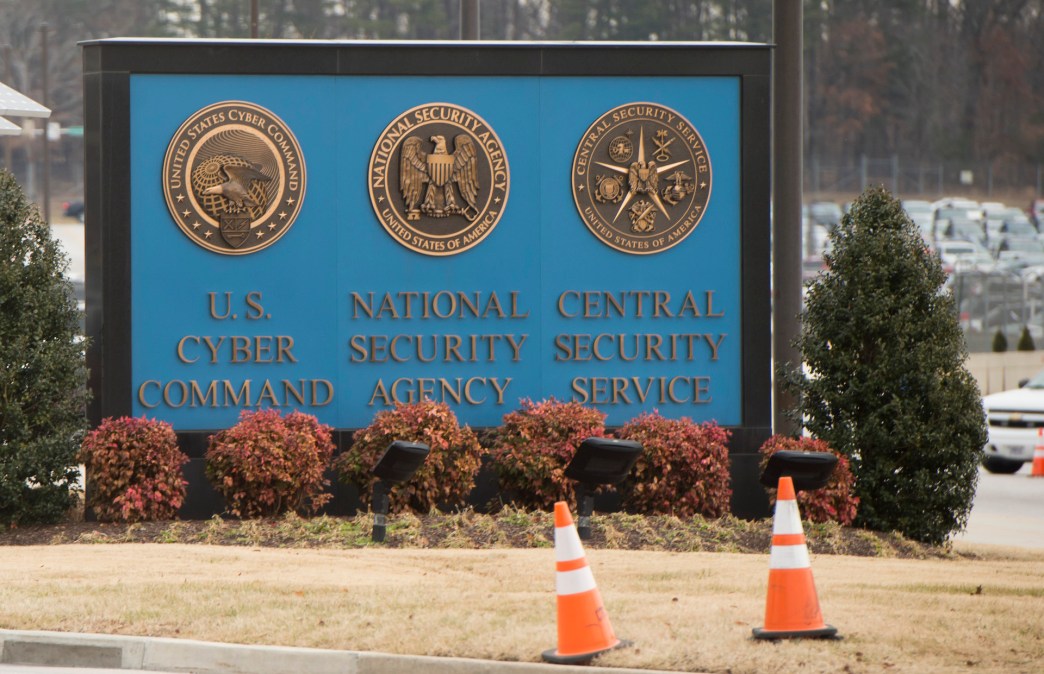NSA’s foray into podcasting highlights its role in Bin Laden raid, cybersecurity

Given Osama bin Laden’s profile in the 1990s as the leader of Al-Qaeda, he was a clear target for U.S. intelligence agencies. That work accelerated, obviously, following the 9/11 attacks on America.
However, despite the National Security Agency’s access to a satellite phone Bin Laden had been using, media reports alerted the terrorist leader to that collection, leading to an effective electronic communications collection blackout for the agency. This made collecting on valuable intelligence for future plots and his movements very difficult, forcing the agency and broader intelligence community to have to be more creative. Officials decided to begin collecting on curriers, which ultimately led the intelligence community to pinpoint Bin Laden’s location in Pakistan.
That is an anecdote from the NSA’s new podcast that’s dropping Thursday. It’s name, “No Such Podcast,” is a play on the “No Such Agency” moniker given to the organization due to its secretiveness.
NSA, a combat support agency serving as the nation’s premier signals intelligence organization and cybersecurity outfit, wants to pull the curtain back on some of its work and highlight its roles and missions in the national security arena.
“For years, the very existence of NSA was classified, leading to the name ‘No Such Agency.’ Now, as NSA has increased its public engagements in the past several years, ‘No Such Podcast’ provides a new channel for people to learn more about one of the country’s most secretive agencies,” according to an agency spokesperson. “NSA believes in showcasing the incredible, dedicated work of our diverse, expert workforce. ‘No Such Podcast’ extends our existing efforts into a new and growing medium.”
According to a transcript provided by the agency ahead of its release, episode one details the long journey to hunt down Bin Laden, the world’s most wanted terrorist, while also delving into the craft of signals intelligence, or SIGINT.
“We did have some interesting collection on [Bin Laden] in the past using a satellite phone. Unfortunately that got published in the media that we were collecting him off that satellite phone. From that moment on, no more electronic communications from him,” Jon Darby, former director of operations at NSA, said in the podcast’s first episode, highlighting the challenge of maintaining secrets and keeping open avenues for intel gathering.
Officials in the past have said that NSA provides nearly a quarter of the intel contained in the president’s daily brief, a summary of top-level national security information.
“In its basic form, a signal is a current or a pulse or a radio wave — something that transmits information and data between systems and between networks. So each signal, think of a phone call, or a text, or even communicating over the internet. These things create a digital footprint that we would call a signal. There are other digital footprints or signals we’re interested in, like weapon signals, radars, missiles,” Natalie Laing, director of operations at NSA, explained. “There has to be a requirement to go after that signal for some reason of national security and importance. So as most basic, that’s what the signal world is, and that’s what signals intelligence is, that data that rides on the signal that we are interested in for national security purposes.”
Podcast guests provided three distinct examples for how signals intelligence has contributed to national-level insights and helped combat malicious activity. First, interviewees said signals collected ahead of Russia’s full-scale invasion of Ukraine provided advance warning of Moscow’s actions, allowing U.S. Cyber Command to send a team of personnel to Kiev to help harden networks — a success largely touted by the U.S. for contributing to Ukraine’s resiliency against digital feints during the early stages of the attack.
Additionally, according to officials, signals intelligence was used to inform the origins of chemicals used to synthesize fentanyl in China, in an effort to help stem the shipment to the United States, where deaths related to the drug have surged to record highs.
Guests also described how signals intelligence collection helped to identify multiple ransomware attacks — some before they occurred — to help protect critical sectors in the U.S. such as the defense industrial base.
When it came to finding Bin Laden, Darby and Laing noted that it was a full-team effort across the intelligence community. They described the long chase that came in fits and starts with lead after lead being investigated. Analysts would pour through collection data and try to discern what was important for senior leaders.
“One of the main things we need to do when we do that collection and processing is make this understandable for the folks that are going to be working this … you might be looking at a signal or a big grouping of signals that are very complicated, highly technical, or encrypted, or all three of those things. So it is our job to not only undo the complexity to get to the meat of the data so that the analysts can use that, but also we have to establish the right thresholds for how to go through that data,” Laing said.
“Jon was talking about the couriers as we were targeting UBL. If we were to go through all this collection and see anything that relates to that courier, obviously that’s something we would discern is of foreign intelligence value. We will keep following up on that. If it was, for example, a signal that was right next to that one, of a local taxi driver near you, okay, that’s not something we would discern we need to follow. So that’s one way that we start to parse out this collection so it’s usable and meaningful because the volume is pretty significant,” Laing added.
On the night of the raid to capture or kill Bin Laden, NSA’s role was to ensure there were no threats to the team, providing indications and warning to the helicopters carrying the SEAL team that carried out the mission.
The rest is history.
Meanwhile, the second episode of the podcast dives into the NSA’s role in cybersecurity.
“Cybersecurity is absolutely critical to national security. So when you think about advanced cyber actors, whether it’s Russia, China, Iran, North Korea, or non-state actors, it’s critically important for our nation to have threat intelligence that helps us navigate all the various aspects of the cybersecurity mission,” Dave Luber, director of cybersecurity for NSA and former executive director of Cybercom, stated.
“When you think about national security systems, you think about all the systems that support the Department of Defense, all the systems that support the intelligence community, and also select portions of our federal civilian agencies and departments, also rely on national security systems capabilities. So whether it’s threat intelligence, whether it’s partnerships, or whether it’s a focus towards key encryption capabilities to protect our most important national security systems, that’s what cybersecurity means to the National Security Agency,” he said.
Driving together themes from the two episodes, officials noted that NSA has started to focus on threat intelligence collected via signals intelligence as a means of improving cybersecurity.
They also highlighted how the U.S. military has changed due to the cyber environment and what the NSA is doing in its role as a combat support agency.
“From a military perspective, in terms of how the landscape has changed over the last decade, I would just reflect on the adversary that we were fighting. And so for the military, for the last 10 years, we were postured for this global war on terrorism. Rightfully so. It was an adversary that was not that sophisticated, did not rely on technology,” then Maj. Gen. Jerry Carter, who was deputy director of cybersecurity for combat support, said. Carter has been promoted to three-star and assumed the role of deputy commandant for information Aug. 2.
“When you look at the world today and out to 2030, I mean, it’s a different environment,” Carter continued. In the past, the focus was on air, land and sea, “but now we add space and cyberspace, which really challenges us.”
Interviewees also noted the partnerships across government and military agencies and the role NSA plays in protecting weapon systems.
“When you look at the changes that have been occurring across our department, especially with the advent and use of proliferated LEO, low-Earth orbit architectures, to support warfighters, it’s been really important for us at NSA to ensure that high assurance cryptography protects all parts of that space ecosystem,” Luber said.
“Whether it’s the ground segment, the user segment, the link segment or the space segment, NSA is there to support the warfighters as they develop those new capabilities to ensure that we have warfighting systems in space. So one of the partnerships that we’ve had over the past three years is with the Space Development Agency,” he said. “Working closely with SDA, Dr. [Derek] Tournear and his team, we’ve ensured that over the last year, we’ve been able to support the launch of 27 low-Earth orbit satellites to support Department of Defense capabilities. And that includes the capabilities to provide secure communications from that ground all the way up to the space segment, but also bring new capabilities online to really enhance warfighting systems.”






